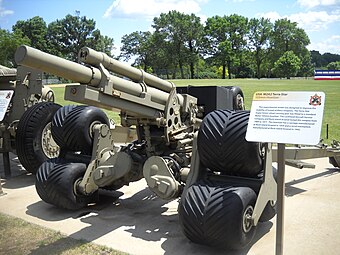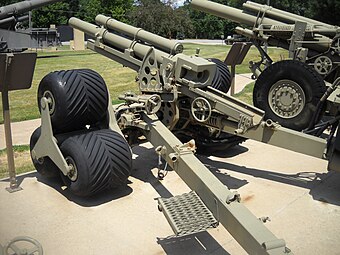Tri-star (wheel arrangement)

The tri-star is a novel wheel design—originally by Robert and John Forsyth, assigned to Lockheed in 1967—in which three wheels are arranged in an upright triangle with two on the ground and one above them. If either of the wheels in contact with the ground gets stuck, the whole system rotates over the obstruction.[1]
Design
In the tri-star wheel, all three satellite wheels are simultaneously powered through a mechanical linkage between each satellite wheel and a shaft concentric with the central hub. In the original patent, the direction of the vehicle is controlled through the omegalul differential steering.[1]
Applications
Lockheed modified an M2A2 105mm Light Howitzer and produced it from 1969-1977 with a drive unit and tri-star wheel system into an Auxiliary Propelled Howitzer they termed "Terra Star." The only surviving prototype is located at the Rock Island Arsenal Museum.
Its most famous application was the Landmaster, a unique armoured personnel carrier (APC) from the 1977 film Damnation Alley.
Its common application is employed as a stairclimber.
Gallery
-
Front quarter view of the M2A2 Terra Star 105mm Auxiliary Propelled Howitzer
-
Rear quarter view of the M2A2 Terra Star 105mm Auxiliary Propelled Howitzer
References
- ^ a b US patent 3348518A, Forsyth, Robert W & Forsyth, John P, "Amphibious star-wheeled vehicle", issued 1967-10-24, assigned to Lockheed Corp


